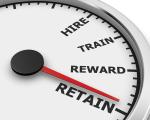ALEXANDRIA, Vir. — In today’s busy, competitive and uncertain economic times, burnout among leaders, managers and employees in every business arena, including the drycleaning industry, is a problem on the rise.
Identifying and combating this issue was the goal of “Stress, Burnout, and the Workplace: Strategies for Enhancing Employee Engagement,” a presentation from the Society for Human Resources Management (SHRM) as part of its recent Mental Health and Wellness Virtual Retreat.
The event was hosted by SHRM’s President and CEO Johnny C. Taylor, Jr., who spoke with Chris Mosunic and Chibs Okereke from the meditation and relaxation app developer Calm. Mosunic is Calm’s chief clinical officer, and Okereke is the company’s stress & burnout coach and instructor.
“The pandemic has long behind us, but the issues of burnout and stress that negatively impacted workers and businesses during that time are still as much of a problem as ever,” Taylor says. “Many organizations are struggling with how to best support their employees’ mental health and wellbeing.”
What Burnout Is and Why Leaders Should Care
According to the National Institutes of Health (NIH), burnout is now defined as “a psychological syndrome emerging as a prolonged response to chronic interpersonal stressors on the job. The three key dimensions of this response are an overwhelming exhaustion, feelings of cynicism and detachment from the job, and a sense of ineffectiveness and lack of accomplishment.”
The term “burnout” was coined by Herbert Freudenberger in 1975, initially focusing on burnout among healthcare professionals. “He focused on therapists, nurses, social workers and people on the frontlines taking care of people,” Mosunic says.
Negative attitudes and decreased motivations are the first signs of this condition.
“I like to call it ‘getting crusty,’” Mosunic says. “I’ll ask my coworkers — ’If I’m getting crusty, let me know.’ That negative attitude is a quintessential hallmark of burnout. And then there’s lower performance and motivation. Those things combined, clinically speaking, are how we define ‘burnout.’”
Left unchecked, burnout not only affects job performance, but can also impact the worker’s health.
“It’s going to translate into lots of problems,” Mosunic says. “The most obvious are conditions such as hypertension, diabetes, depression and absenteeism. Those things are going to start coming in at elevated rates, and these start to become chronic conditions. Over time, it becomes a snowball effect.”
Besides caring about the health and mental wellbeing of their staff, Taylor believes that leaders also have a responsibility to their companies to ensure their workers have the tools to avoid burnout.
“Recent SHRM research revealed that 44% — nearly half of employees — report feeling burned out from their work,” Taylor says. “Additionally, workers who feel burned out are 16% less likely to go ‘above and beyond’ what is expected of them. So, it’s not good for the individual, and it’s not good for the employer.”
Managers who don’t recognize the threat posed from burnout might not be aware of its true impact.
“You may think this is working for you — ‘I’m getting a lot out of my employees,’” Taylor says. “In fact, you may be getting the hours out of them. But over time, you’re getting less and less quality from a productivity standpoint.”
And, while the term “burnout” is bandied about to the point it becomes difficult to pinpoint the actual cases, Mosunic cautions leaders that the threat of burnout might hurt the employees they depend on the most.
“The slackers are not the ones who are burning out,” he says. “It’s your high-performing individuals — the ones you want to retain in your company. Unfortunately, a lot of people will use the term ‘burnout’ to just say, ‘I don’t want to work.’ That’s not what we’re talking about here. We’re talking about true burnout, and those high performers are the most susceptible.”
Come back Tuesday for Part 2 of this series, where we’ll examine the stages of burnout and how to recognize them.
Have a question or comment? E-mail our editor Dave Davis at [email protected].











































































